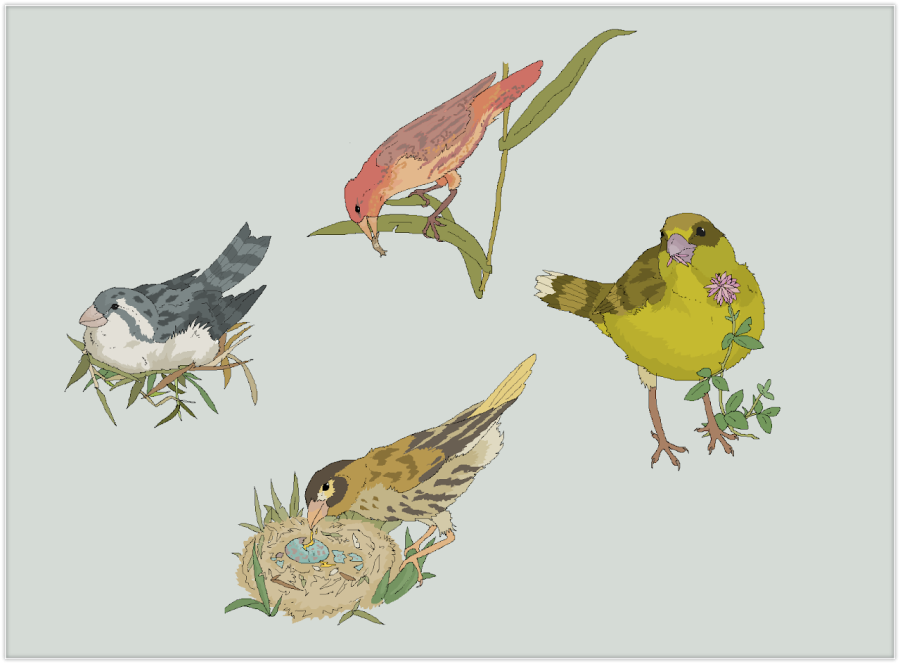Speculative Biology: The “What If” Of Evolution
The explanation of a few speculative biology projects.
Promotional Image from https://sites.google.com/site/worldofserina/the-hypostecene-0—15-million-years/10-000-years-post-establishment?authuser=0
Introduction
Evolution. This is a theory widely accepted by scientific communities, and helps to explain a ton of things. Evolution is unpredictable and wild, with any possibility just within reach of nature’s grasp. Take for example the Thresher Shark. These sharks have an interesting evolutionary adaptation that makes them stand out from all the rest: It uses its tail as a whip. The upper part of its tail is long and sleek, and with a quick snap, it stuns its prey and prevents it from escaping. Don’t worry though, it is deemed harmless to us because of its shy and skittish nature. But what if evolution was different? What if the environment were more extreme, or the mass of the planet was 10x less? Some scientists out there wonder the exact same thing, except some have nothing better to do, so they use their immaculate artistic skills to make a speculative biosphere straight from scratch. I will be providing some examples of speculative biology and what they are.
All Tomorrows
All Tomorrows is a speculative evolution project written and illustrated by C. M. Koseman, under the pen name Nemo Ramjet. This project has to be one of the most well-known– if not already the most well known speculative evolution project of this time. A big question regarding the whole thing is asked subconsciously whilst reading the lore,
“What could the future possibly hold?”
The author answers this by throwing that idea down a hole of hands, each trying their best to get a grip on it. Humanity has developed spacefaring technology, bringing some humans to Mars so that they can live there. After long, the Mars inhabitants adapt to Mars and begin to technologically advance faster than humanity. Humanity, being the absolute duffel bag of horse feces they are, decides to go to war with Mars, resulting in a war lasting just about a thousand years. Both sides, having lost so much, realized that they didn’t even know what they were fighting for in the first place, so they stopped and genetically produced a being that could live on other different planets or something like that. This then follows a long list of events, such as the genetical reign of the Qu, or the mass devastation of the Gravitals, but I’ll leave all that for you to find out if you’re interested.
The Epic of Serina
What if you had a completely terraformed moon with tons of berries, fruits, fish, and insects, and filled it up with canaries without any predators? This is the question that Dylan Bajda (AKA “Sheater888”) tried to answer using illustrations.
On Earth, finches have evolved different beaks in accordance to their habitat and foods available to them. This was an excellent example of evolution in the natural world and how living beings can respond to environment changes by adapting to them. But if they had an entire planet to themselves? The speculative zoology project documents how different canaries evolved over time to swim better in the water, grow stronger legs to become land-faring, bury underground to protect their eggs, or even become predatory. This story follows six epochs, of which in one having some new important change to both the evolutionary branches of the canaries and the world. Overtime, the moon begins to die, losing heat over millions of years until there would be an inevitable end. After all, nothing lasts forever. I will, however, leave it to you to find out what happened in those six epochs of Serina.
Project Creation
The Cluster. A large assembly of stars awakening life from the most extreme worlds, from gas giants to a planet scorched with the rays of three suns. A project by the likes of Charlotte Veldhuizen, Project C is a vast worldbuilding project with the question of:
“What would life be like and how would they survive in the most challenging ecological circumstances?”
This question has brought upon a myriad of imaginative and scientific possibilities, and all of them as interesting and head-scratching as the rest. The project goes into depth about the different ecological niches of certain alien creatures, and how they perform them. For example, let’s look at the planet Ondriel. This planet is a gas giant, which is a planet consisting of gas– if you didn’t already know. So, how would life survive in such an unusual environment? Well, the vast majority of fauna that live on this planet have gas-filled bladders that they can inflate and deflate as a way to propel themselves through the cloud-littered sky. The flora seen on this planet, however, do not have these gas bladders. The Giant Gargantulillies float through the tops of the air, lightweight enough to simply just float on the air, but large enough to house entire ecosystems on top of each one. Their size allows them to soak up the vast amounts of sunlight that enter the planet’s atmosphere, providing use to both the organism and the fauna that float beneath it. There are much more worlds left to explore, but I will leave the rest of the exploring to you.
Conclusion
The sheer amount of possibilities that speculative biology catches in its broad blanket is incomparable, and the quality of the beautiful imaginative projects that bleed out through the cloth are abominations– beautiful abominations. I highly recommend that you check out the brilliant artists that made the projects I talked about and more, because we wouldn’t have these masterpieces without them. I hope that you found what you were looking for, and as always, thanks for reading.
RELATED ARTICLES:
https://blogs.scientificamerican.com/tetrapod-zoology/speculative-zoology-a-discussion/
https://medium.com/@scottgladstein/basics-of-speculative-biology-9f0cec8465f7
https://news.cnrs.fr/opinions/imagining-the-animals-of-the-future
https://yoldas.medium.com/what-is-speculative-biology-c35a57de6990
TAKE ACTION:
https://www.goodreads.com/book/show/16143402-all-tomorrows
https://speculativeevolution.fandom.com/wiki/All_Tomorrows
https://sites.google.com/site/worldofserina/introduction?pli=1
https://speculativeevolution.fandom.com/wiki/Serina:_A_natural_History_of_the_World_of_Birds











